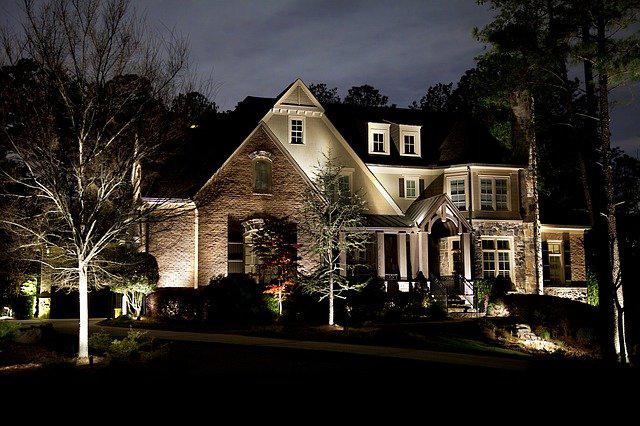
You might have an amazing well-decorated house but without the right lighting, it’s all for nothing. People often spend thousands of dollars on furniture, walls, and flooring but forget the importance of lighting in order to highlight their efforts. Depending on windows for natural light and a few other traditional sources of lightning may not be enough to cater to every mood and need or bring out the true beauty of your home. Lighting can decide the mood, ambience and vibe of any room and even the intensity, colour, type or placement of the lights can have a huge impact. While there are innumerable ways of experimenting with lighting in your home, here are 6 of the most common principles to follow for a good lighting setup in any home.
Add more sources
In order to have more flexibility and to avoid any darker corners far from your traditional light sources, the most advised principle is to think of the room in layers and have more lighting sources than you might think you need. A common mistake is to have only overhead lights all over the house. Such bright staple lighting makes your house feel like a stadium or a convention. The key is to add floor lamps and table lamps near your couch or on your desk for task lighting to avoid straining your eyes and provide a cosy atmosphere. Adding new light sources may be easy or difficult depending on the sort of light you want. For example, while installing a new lampshade might be as easy as just plugging it in, installing a new light on the ceiling may prove to be too ambitious for you and you might need an electrician’s professional assistance for the installation of the fixture and concealment of the wires.
Consider the heights and sizes
Another common mistake is to ignore the importance of the relative sizes of your furniture, house and your light fixtures. Disproportionate light fixtures and furniture take away from the aesthetic of the furnishings and decor of your home. It’s important to note that often light fixtures look smaller in huge showrooms. Hence, it’s advisable to bring actual measurements instead of depending on eye estimations in the store. Another extremely important aspect is the height of hanging light fixtures and chandeliers. Considering your ceiling height and the size of the room is key to picking the right size of chandelier. While some chandeliers come with adjustable cord size, others have fixed lengths which might end up being too high or low without prior estimation. As a rule of thumb, the sum of the height and width of the room in inches should be the appropriate diameter of your chandelier. Pendant lights should traditionally be around 30 inches above a kitchen island and around 20 inches below a standard 8-foot ceiling with an additional 3 inches for every foot of ceiling height in a dining room and the bottom of a table lamp should be at your shoulder while sitting down beside it to avoid getting blinded by it.
Unconventional placements
When trying to switch up the lighting of your home, the biggest handicap is that you often assume that you have to stick to fixtures and placements you already have. However, in order to make any space more ambient and functional, consider adding lighting in unconventional spots. Lights don’t have to be lamps or chandeliers. You can always add strip lighting at the base of kitchen cabinets, your bed and even stairs. Not only do these lights provide ambient soft lighting but are also extremely functional for whenever you get up at night. You can also line pictures or frames with such lighting to create a focal point or highlight an area.
Change the type
When changing your lighting, it is also important to consider the energy consumption of your lights. While you might be fixated on changing the fixtures, it’s also important to focus on changing the light bulbs for more sustainable options like LED and halogen bulbs. Also, consider playing around with different colours, tones and hues of lights to get the most of any light placement as coloured lights can themselves provide a decorative aspect when lit up. For example, if your walls are a cooler tone, try a warm-toned bulb to cast a shadow that complements your walls. Again, try cooler toned hues with warm-toned walls for the contrasting shadows.
Try smart lights
Installing smart lights which can be controlled by your smartphone assistants like Alexa or Google Home is also another option to consider. Not only does it allow you to switch the lights on or off or dim them without having to move, the lights can be lit when you’re getting up at night or entering the house through the garage door, reducing the chances of accidents due to darkness and hence is a great mix of functionality and convenience.
Don’t forget outdoor lighting
Another important aspect to remember that your home isn’t limited to those four walls and actually includes the entire land along with your decks and back and front yards. Hence, the lighting isn’t complete without proper outdoor lighting. There are many ways to light up your landscape to make it classy and functional. For example, consider installing low energy outdoor lamps to illuminate garden statues to create a striking effect, up lighting a fountain, arranging lights along with posts, walls or steps, or even lighting up your trees with fairy lights arranged around their branches.
These were 6 ways to change your home lighting. But your options are not limited to these options and go as far as your imagination would take you. So unleash your creativity and start innovating!
Author bio:
Ross Geller is a working Designer and passionate writer. He enjoys writing about the latest home decor and lifestyle trends all around the globe. He has been working with Elite Garage which provides garage door repair with the potential sometime now. Through his writing, he hopes to influence as many people as possible to help build a beautiful home and space.
Stay informed, Stay ahead and stay inspired with Get News 360
